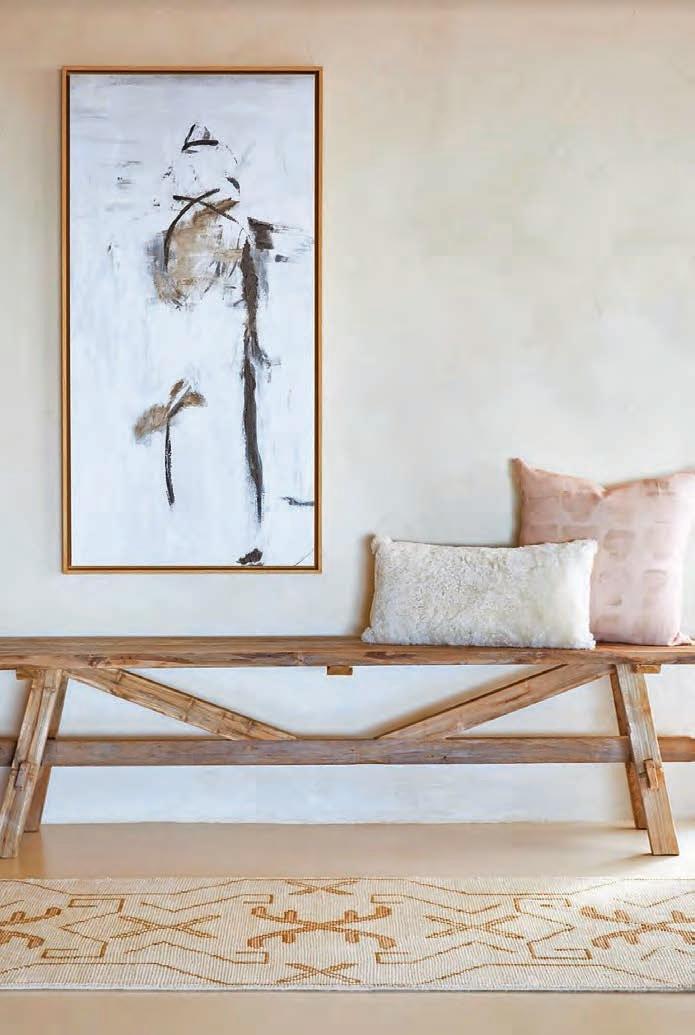
2 minute read
Texture adds new dimensions to your walls
from HOME 2021
TOUCH OF TEXTURE
Add character to your walls
Advertisement
BY KAREN ASP
When you want to make a room in your home feel warmer and more inviting, even add dimension to it, consider textured walls.
Twenty years ago, people were using the sponging technique or applying stencils. “Today is more about re-creating organic textures and (Japanese) wabi sabi elements,” says Kelley Mason, manager of creative and content at Lulu and Georgia, an online interior design resource. “Texturing walls is more about adding a patina and a story to a home, rather than trying to solely add visual interest to a space.”
Textured walls offer numerous design benefits. “They can give a room more dimension and add warmth and movement,” says Dolley Frearson, co-founder of High Fashion Home, an online retailer with a storefront in Houston. “In a home or room that’s minimal and simplistic, a textured wall can make the space feel more cozy and inviting.”
Even in a space where visuals might seem overwhelming, textured walls can give the room a layered look that feels rich and alive. For example: Oftentimes, a small powder room can feel larger and more interesting with

TIPS
uWALLPAPER Follow the instructions carefully and do the necessary prep work like sanding down the walls or using primer; tape a swatch of paper on the wall for a few days to make sure you won’t tire of it quickly.
uPAINT First, do a sample test on paper board or even a small section of the wall.


wallpaper. “The movement or pattern makes walls appear endless,” says Frearson.
There are numerous ways textured walls can be achieved in a home, and painting techniques like limewash (a mix of water and crushed limestone, sometimes pigmented) and Venetian (fired limestone) plaster are growing in popularity, Mason says. Wallpaper remains a popular way to adorn walls. Fabriclike options such as grass cloth and silk are preferred for their ability to add character and texture. Materials like cork are being used to add an organic element to walls. 3D panels are also trending, and while wood paneling from the 1970s might be passé, people are choosing carpentry texture that matches the style of the home, Frearson says. Think, for instance, wainscoting in a traditional space, wall molding in a European-inspired room or paneling that incorporates wood in modern stains and finishes.
Unless you’re a skilled DIYer, textured walls can be tricky to do on your own, Mason says. “Things like applying limewash or wood paneling aren’t beginner projects and require a certain level of artistry and talent, not to mention some basic carpentry skills,” she says.
Of course, if you’re not up for trying these techniques yourself, you can always hire a professional. Choose experts who have completed similar projects and can show you samples of their work, Mason says.
Bottom line? Don’t be afraid to make your walls come alive with texture. “Once you find something you love, it will bring you so much joy,” Frearson says.










